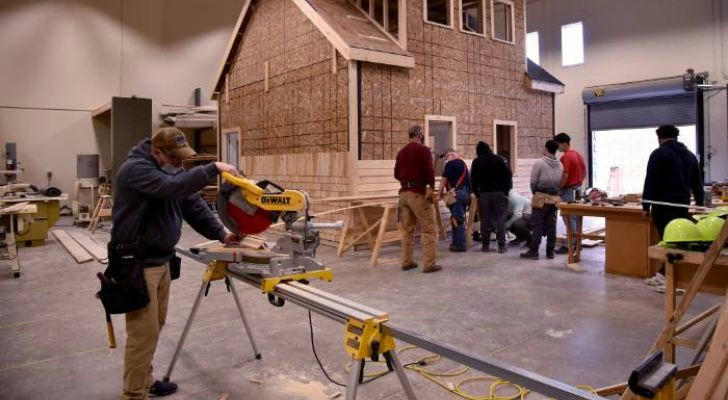How to Become a Certified Carpenter: Training and Job Outlook
Carpentry is one of the oldest and most respected trades in the construction industry. From framing houses to building cabinetry, certified carpenters play a key role in nearly every phase of building projects. Understanding how to become certified in this trade—and what to expect from the job market—can help individuals plan a stable and skilled career.

What Does a Carpenter Do?
Carpenters work with wood and other materials to construct, install, and repair building frameworks and structures. Their responsibilities often include:
- Measuring, cutting, and shaping wood or other materials
- Reading and interpreting blueprints or technical drawings
- Installing doors, windows, stairs, and other structural components
- Operating power tools and hand tools
- Ensuring projects meet building codes and safety standards
Carpenters may specialize in different areas such as rough carpentry (framing), finish carpentry (detailing), cabinetry, or commercial construction.
Types of Carpentry Specializations
Carpentry is a broad field with several paths based on individual interest and regional demand:
- Residential Carpenters – Focus on homes, apartments, and condos.
- Commercial Carpenters – Work on offices, schools, hospitals, and retail buildings.
- Industrial Carpenters – Construct and maintain infrastructure like bridges and tunnels.
- Cabinetmakers – Create and install fine woodworking products, including cabinets and furniture.
Each specialization may have its own training requirements and tools.
Required Skills and Qualities
Aspiring carpenters benefit from having strong:
- Math skills – Especially geometry and basic algebra
- Physical stamina and strength – The job often involves lifting, standing, and bending
- Attention to detail – Precision is critical when cutting and assembling parts
- Problem-solving abilities – Adjustments may be needed on the job
- Time management – Projects must be completed on schedule
These skills can be developed through formal education, apprenticeships, and hands-on practice.
Step-by-Step Guide to Becoming a Certified Carpenter
1. Complete High School or GED
Most entry-level carpentry training programs and apprenticeships require a high school diploma or equivalent. High school coursework in math, shop, and mechanical drawing can provide a helpful foundation.
2. Enroll in a Technical or Trade School
Some aspiring carpenters choose to attend a trade school or community college for pre-apprenticeship training. These programs typically last 6 months to 2 years and cover:
- Basic carpentry skills
- Blueprint reading
- Safety protocols
- Material handling
Formal education can be especially helpful for those with no prior experience in construction.
3. Apply for an Apprenticeship
The most common path to becoming a carpenter is through an apprenticeship. These programs, often sponsored by unions or contractors, combine paid on-the-job training with classroom instruction. Apprenticeships generally take 3 to 4 years to complete and include:
- 144 hours of classroom instruction per year
- 2,000 hours of hands-on work annually
Graduates of apprenticeship programs are considered journeyman carpenters and may be eligible for certification.

4. Obtain Certification or Licensure (If Required)
Certification requirements vary by state and employer. Some states require carpenters to hold a contractor’s license, especially for those who are self-employed or manage larger projects. Certification can involve:
- Verifying work experience
- Passing a trade exam
- Meeting insurance or bonding requirements
National certifications, such as those offered by the National Association of the Remodeling Industry (NARI) or the National Center for Construction Education and Research (NCCER), can enhance a carpenter’s credentials and job prospects.
Average Time to Certification
The time required to become a certified carpenter depends on the chosen path:
- Technical school only: 6 months to 2 years
- Apprenticeship route: 3 to 4 years
- Combined approach: Some start with school and move into an apprenticeship, taking up to 5 years
Hands-on training is essential, and many employers prioritize practical experience over formal education alone.
Salary and Job Outlook
Median Salary
According to the U.S. Bureau of Labor Statistics (BLS), the median annual wage for carpenters was $51,390 as of May 2023. However, pay varies widely based on experience, location, and specialization:
- Lowest 10% earned under $33,000
- Top 10%
Union membership and working in commercial or industrial settings often lead to higher wages.
Job Growth
The BLS projects that employment for carpenters will grow 1% between 2022 and 2032, slower than the average for all occupations. However, an average of 79,500 job openings are expected each year due to retirements, career changes, and demand for renovations and new construction.
Carpenters with specialized skills—such as those who can work with green materials or new construction technologies—may see better job prospects.

Advancement Opportunities
With experience, carpenters can move into supervisory roles, such as:
- Lead Carpenter
- Construction Foreman
- Project Manager
Some choose to open their own businesses or become general contractors. Additional certifications in areas like project management or sustainable building can support career growth.
Conclusion
Becoming a certified carpenter involves a combination of training, practice, and sometimes licensure, depending on the state. For individuals interested in hands-on work, tangible results, and long-term skill-building, carpentry offers a stable and rewarding career. Understanding the training timeline and job outlook can help future tradespeople make informed decisions about this essential profession.
